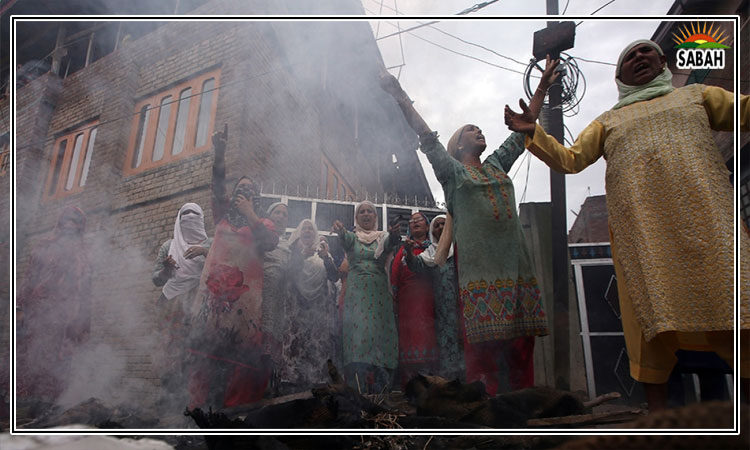Gearing up for change…Ali Tauqeer Sheikh
THE newly elected government of Prime Minister Shehbaz Sharif has a rare window of opportunity to exercise leadership by aligning national climate action with the ongoing economic reform agenda.
The prescribed macroeconomic stability and sustained economic growth cannot be fully achieved without stopping the economic bleeding caused by climate-triggered loss and damage. For this, the prime minister will need to shift into high gear and move his famous Shehbaz speed from project management to spearheading structural reforms.
It is not the time for him to undertake the development of additional policy documents, but to understand what the existing policies and commitments can deliver, as well as the barriers to their implementation that the government can remove. The prime minister needs to repeatedly ask all his cabinet colleagues, and everyone he shakes hands with, why policies so very often fail to get implemented or deliver the intended benefits. How best can we make good on the commitments made to our lenders and other development partners?
After the Stand-by Arrangement ends next month, Pakistan is expected to enter into another agreement with the IMF. The anticipated Extended Fund Facility will provide a policy anchor for addressing domestic and external imbalances by pursuing structural reforms. It is also expected that the EFF will help create much-needed space for social and development spending, covering the energy sector, SOE governance, and climate resilience. All three are a drain on the economy but the last one is the most expensive ticket item and it has the least clarity of purpose in policy circles. Without following a clear roadmap for building resilience, the new government will hardly succeed in turning around the economy.
Grappling with C-PIMA: The menu of reforms will build upon actions already agreed to under the IMFs Climate Policy Implementation Matrix Assessment. The C-PIMA is only a checklist and therefore not a substitute for a national reform agenda. Since it has included almost all ongoing governmental endeavours, albeit implemented sluggishly by multiple ministries, their consolidation in one matrix has strong indicative value for necessary reforms for the release of IMF tranches. It is imperative we understand that these conditionalities need to be a part of larger national reform goals that include the institutional and structural reforms needed for measurable climate resilience and low-carbon development.
The success of any reforms will hinge on speed, sequencing, and decisiveness of action.
The reforms need champions, not checklists. The incumbent government, therefore, needs to adopt a longer-term climate-resilience agenda. Leading from the front would mean that a national vision for broader and inclusive development is crafted in which lender conditionalities or disbursement-linked indicators are only a building block for improving the internal functioning of the government. Given the urgency and time sensitivity, the success of any reforms will hinge on speed, sequencing, and the decisiveness of action three defining features of an effective leader in troubled times.
Climate-proofing policy planning: The depth and breadth of reforms will need political readiness and ownership. In the realm of climate-smart planning, and in project appraisal and selection for public sector investments, the IMF has ranked Pakistans capacity as low. Scores in budgeting and portfolio management or risk management are not impressive either. In terms of reform priorities, the C-PIMA has urged the government
i) to strengthen the climate-smart project appraisal system,
ii) to tag climate-related expenditures,
iii) to address climate risks by undertaking asset management and maintenance policies,
iv) to include climate-related risks in fiscal risk analysis, and
v) to address climate vulnerabilities through urban planning and building codes.
In other words, it is time for the new government to use these conditionalities as precursors of good governance and instruments of implementation of the Nationally Determined Contributions (NDCs) and the National Adaptation Plan (NAP), both specifically mentioned for implementation in the C-PIMA. How can the government develop this checklist into politically supported reforms?
Climate-proofing investment portfolio: Embedding climate considerations in the governments Rules of Business, accounting and auditing standards, prescribed rules, procedures and SOPs is the real reform challenge that lies ahead. Pakistan has had limited success in adopting climate-compatible rules, procedures and systems.
The process needs step change and acceleration. It is to the credit of Dr Jahanzeb Khan, the outgoing deputy chairman of the Planning Commission, that the Commission has approved a Handbook on Climate Risk Screening for Development Projects. The handbook has revised project planning documents covering the entire project life cycle under PC-I, PC-II, PC-III, PC-IV, and PC-V. These proformas have integrated essential climate-risk considerations to screen and assess adaptation and mitigation benefits of all public-sector projects.
If notified and implemented, the handbook could help project proponents address the climate vulnerability of surrounding biophysical and socioeconomic systems. It could also help map projects on a comparative basis across provinces, regions and districts, as well as types of climatic challenges and investment trends and gaps, and prompt project proponents to make informed choices aligned with national goals as outlined in the annual development plans, NAP, NDCs and other national priorities and international commitments such as the Paris Agreement.
It can undergo periodic updates and evaluations. Approved by the outgoing cabinet and all relevant forums, its a parting gift to the incumbent prime minister to remove last-minute glitches and barriers to its implementation before the EFF is negotiated.
Policy planning development value chain: Building on this success, the prime minister may like to show Shehbaz speed in initiating the process of climate-proofing the entire PSDP formulation and approval process and its various approving forums, from national and provincial to divisional and district levels. He can perhaps also expect the concerned ministries to climate-proof their internal systems, procedures, processes, and guidelines.
The government must determine how it will change the nuts and bolts of the nexus of climate change with macroeconomic and accelerated economic growth. Rather than portraying C-PIMA recommendations as arbitrary, we can look upon them as a propeller accelerating much-needed national reforms and the structural change agenda.
Courtesy Dawn












